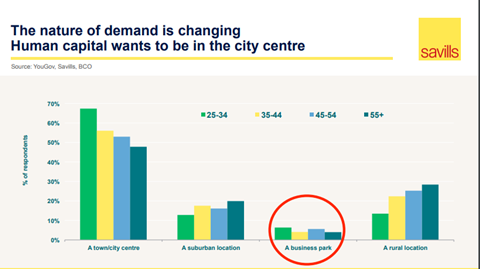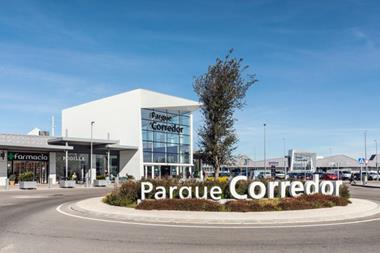Today’s young people want to live and work in cities that cater to the ‘digital native’ and smart investors should strive to give them exactly that, was a key message at the recent PropertyEU CEE Summit in Warsaw.

‘The young want to be in the city centre, not in some out-of-town business park, and this is changing demand,’ said Yolande Barnes, director of world research at Savills, in her keynote presentation at the event.
‘Investors need to pay attention to tech-savvy millennials, who everywhere in Europe are showing a clear urban preference. Their natural habitats are the cool areas in trendy cities, creative hubs like Shoreditch in London or Florentin in Tel Aviv,’ she noted.
The digital natives want communal areas, coffee shops and meeting places, environments that are conducive to face-to-face interaction. Whereas capital used to be concentrated in a large, single-use building like an office block, in future it will need to be spread across more multi-purpose buildings with flexible interiors.
Cities are now entering the digital age, explained Barnes, which ‘wants proximity to other people, it values human capital more than financial capital’.
Search for talent
In Western Europe, a shrinking workforce makes the search for talent and human capital all the more crucial. ‘Millennials are mobile, they can work anywhere so you need to be able to attract them,’ she said. ‘The real driver of the market is not the cost of offices but the search for talent.’
The ability to attract talent is linked to economic success, as shown by ‘winning cities’ like London or Dublin where tech employment is growing fast and has overtaken the financial sector. ‘As interest rates inevitably rise, we will see a clear separation between cities where there is rental growth and the cities that cannot keep up,’ she said. ‘My prediction is that by 2026 there will be a lot more tech cities in CEE.’
These changes have implications for institutional investors, who are moving into alternative, higher-yielding asset classes like student housing and micro-living. ‘Some say it is a late-cycle symptom, but I think it is due to the need for income,’ she said.
‘Institutions now deploy capital to create stable long-term income streams, and in the search for income rental growth matters. It is a different game and we in the real estate world are just at the foothills of beginning to understand this change,’ she added.










